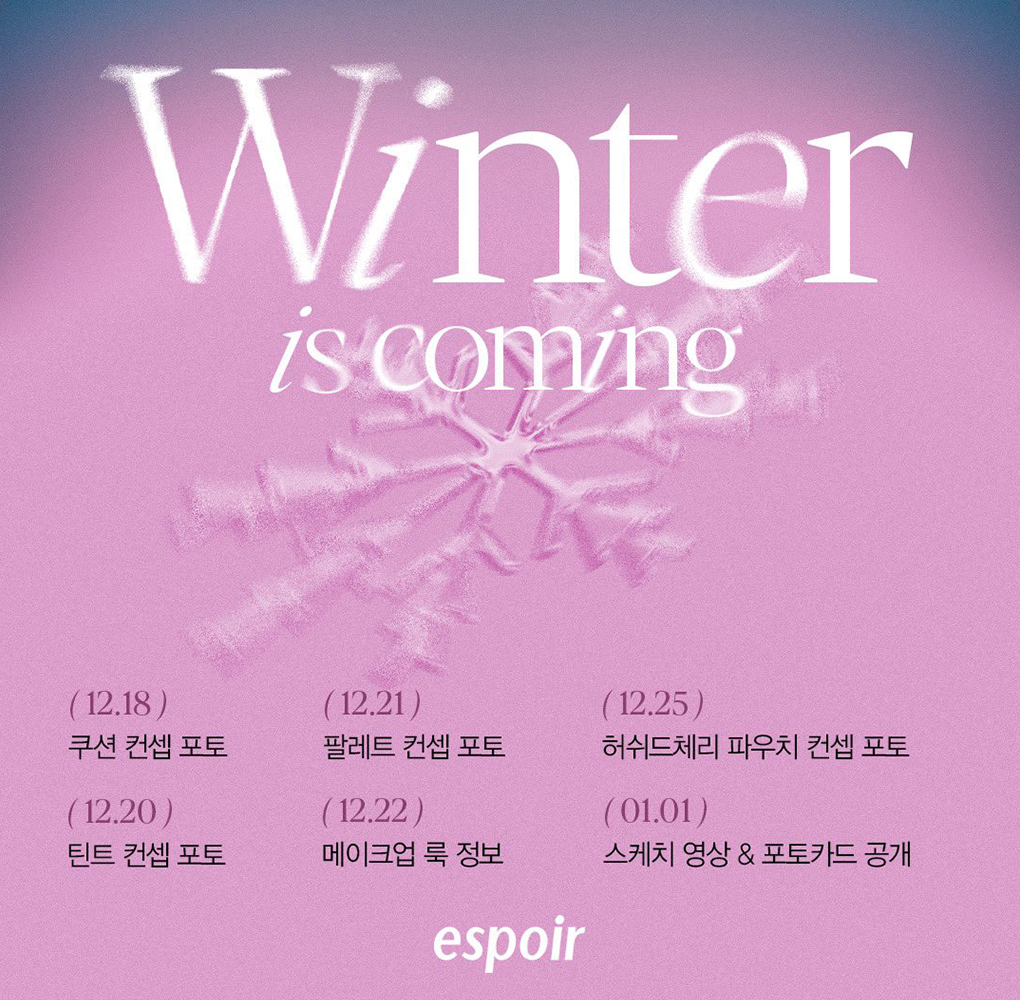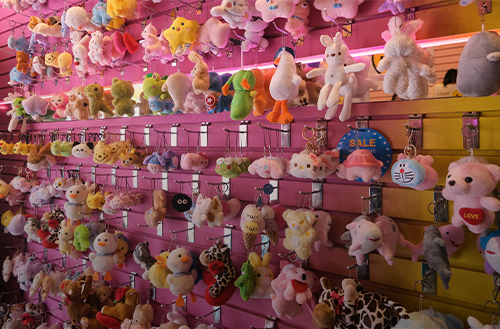

-
-
- 메일 공유
-
https://stories.amorepacific.com/en/k-pop-fandom-the-genesis-of-all-these-trends
K-Pop Fandom: The Genesis of All These Trends
A Veteran Fan Marketer’s Exploration of Fandom Marketing #1

Columnist
Park Sehee eSpoir MC Team

#INTRO
This past winter, I had the opportunity to attend a lecture by Dr. Song Gil-young, a big data specialist and author of “Forecast of the Era: The Age of the Nuclear Individual.” One segment of the session left a profound impression on me.
“We are speaking to fandoms, not the general public. The notion of the general public is now obsolete. Enlightening content no longer works. Our aim should be to create, with the fandom as the viewer. It used to be about informing; now, it’s about sharing what we love.”
It’s common knowledge that to become a lasting brand, you must first build your brand’s fandom. But how exactly do we create this ‘fandom’?
In this column series, I’ll delve into various categories, such as K-POP, sports, and characters that have built solid fandoms from both a fan and marketer’s perspective. Let’s explore different fandom trends together and discover how they can be applied to beauty marketing!
K-POP Fandom:
The Genesis of All These Trends

Source: Aditya Chinchure on Unsplash
Have you ever been a fan of an idol singer? In the 1990s, the quintessential image of an idol fandom involved holding colored balloons, draping banners, and screaming support at large concert venues. The 2000s saw the emergence of fandom neologisms based on digital content like telephoto cameras, fan cams, and Melrimpics (refers to the act of receiving emails from applicants who are requesting participation in an event and then selecting winners according to the sequence in which their emails arrived). Today, fandom activities have become incredibly diversified and extensive, including exhibitions, birthday cafes, subway advertisements, and photocard collecting. The growth of fandom has been significantly influenced by K-pop. With a history as lengthy as K-pop, K-pop fandoms possess unique cultural nuances built over a long period.
If you’re a beauty brand manager, you might be pondering the marketing activities you could deploy and the unique benefits you could offer to another customer group: the ‘fandom,’ especially while working with celebrity models. Therefore, I’ll share insights into the ‘K-pop fandom,’ one of the fastest-changing customer groups, and discuss my direct marketing experiences with them today.
1 Warming Up Through Exploration
Over the years, working with K-pop celebrity models has developed a routine for me.
Whenever a new model is decided, the first thing I do is update my playlist. I arrange the model’s songs in order of popularity and listen to them. I also binge-watch music videos and ‘self-produced content’ from their official channels. Listening to the songs and watching the videos helps clarify visual concepts and content direction and sparks minor ideas, like applying specific lyrics to copy. Engaging the senses in this way aids a marketer’s immersion. I analyze related search terms for the model and read fans’ posts in communities. There’s truth to the saying, “The more you know, the more you see.” But this isn’t merely about gathering information but preparing to dive into fandom culture.

Source: An image created with an AI tool, dall-e
Do you know when our brand model’s birthday is? Our brand has prepared special GWP (Gift With Purchase) and behind-the-scenes content for the model’s birthday. We’ve also offered price benefits through one-day promotions. Recently, a brand created quite a buzz by opening a birthday cafe for their model. They decorated the photo spot with brand themes and gave fans merchandise and drinks in special cupholders. The event attracted fans in droves, dominating digital trends in real time. This led to substantial positive organic viral activity.
Emotional connection and rapport are essential to effectively communicating with K-pop fandoms. If you aim to transform K-pop fandoms into fans of our brand, it’s crucial to know the basics. Remembering the artist’s birthday is essential, as it’s an extraordinary day for fans. Preparing unique content for various anniversaries, like debut days or the day the model’s fandom was established, can also be meaningful.
2 Initiating Conversation in Familiar Terms
Once the warm-up is complete, it’s time to begin earnestly communicating. One day, while preparing a new campaign, I drew inspiration from the content that K-pop fandoms routinely engage with: the ‘schedule teaser’ content.
A ‘schedule teaser’ acts as a scheduler or calendar, informing fans about the release dates of crucial assets related to a new K-pop album. This includes teasers, concept videos, highlight medleys, music videos, and the release dates of songs. This type of content is very familiar to K-pop fans.

Source: eSpoir Social Media
We introduced our edition lineup in a ‘schedule teaser,’ meticulously listing the prepared content in sequence. Upon release, the response from customers was overwhelmingly positive. Although such content is rare in the beauty category, it resonated well with anyone familiar with ‘fandom’ culture. Korean and global fans of the model began leaving positive comments. It was gratifying to see our efforts to embed deep empathy into even the smallest piece of content recognized. The excitement of revealing each asset and the joy of constantly refreshing the pages throughout the day are fond memories.
When devising marketing strategies or planning content for fandoms, consider drawing inspiration from the daily lives of K-pop fandoms. If you’ve never been deeply involved in fandom culture, try searching on YouTube for a combination of the model’s fandom name and ‘Log’ (e.g., MyLog, ShawolLog). This can provide insights into the terminology used by fandom customers, the places they frequent, and their consumption habits.
3 Conveying Sincerity While Maintaining Distance
Not long ago, during a book club meeting of marketers, we broached the topic of fandom marketing. A particular anecdote caught my attention:
“A brand once shared the behind-the-scenes stories of its model and the marketer in great detail. But customers weren’t exactly keen on knowing the manager’s TMI.”
The trend of brand managers sharing their passion and connecting with fandoms is increasing in marketing targeted at fandoms. While this approach can foster familiarity, it sometimes raises concerns that brands and marketers might encroach too closely into their customers’ space.

Source: Otsuka Pharmaceutical Official YouTube Channel, Japan
Recently, an advertisement by a Japanese pharmaceutical company garnered significant attention online. Its success was attributed to its authentic storytelling. It wasn’t a superficial promotion urging, “Our model looks fabulous holding this product, so fans, please buy a lot!” Instead, it was an ad that resembled a ‘drama film,’ warmly spotlighting the daily lives of K-pop fans and seamlessly integrating the product into their stories. By understanding and supporting the context and culture of fandom and fan activities, the content resonated deeply with the audience.
If you’re contemplating marketing strategies aimed at fandoms, it’s crucial not to take someone’s passionate affection lightly. Instead of single-minded research for outcomes, genuine actions should be pondered. Only brand managers who delicately understand and respect fans’ passion can truly grasp the essence of fandom customers and cultivate a fandom for their brand.
#OUTRO
Who is your favorite K-pop artist? Try watching their music videos, stage performances, fan cams, and fan vlogs in sequence today. You might stumble upon sparkling ideas applicable to your work. If you can passionately discuss what you love, it surely won’t be hard to reach out to fandom customers who share a similar ardor.
-
Like
4 -
Recommend
0 -
Thumbs up
0 -
Supporting
0 -
Want follow-up article
0





